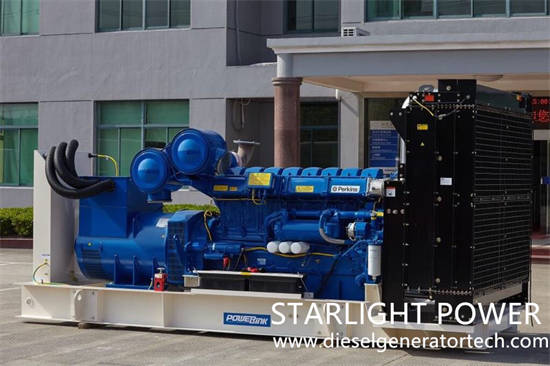Nowadays, diesel generator sets are used in all walks of life. They are the preferred power equipment to provide backup power in case of sudden power outages or enterprises’ daily use of electricity. Diesel generator sets are also commonly used in power equipment in remote areas or field operations. Although users use diesel generator sets, they are confused about the difference between kilowatts (KW), kilovolt-amperes (KVA) and power factor (PF) of diesel generator sets, in order to enable the generator to provide the best performance for electricity, Starlight Power recommends that everyone understand the difference before buying diesel generator sets.
Kilowatts (KW) are used to measure the actual power provided by generators, which are directly used by electrical appliances and equipment in buildings.
The kilovolt-ampere (KVA) measures apparent power. This includes active power (KW) and reactive power (KVAR) consumed by equipment such as motors and transformers. Reactive power is not consumed, but circulates between the power source and the load.
Power factor is the ratio of active power to apparent power. If the building consumes 900kW and 1000KVA, the power factor is 0.90 or 90%.
The nameplate of the diesel generator has ratings of KW, KVA and PF. To ensure that you can choose the most suitable diesel generator set, the best suggestion is to have a professional electrical engineer determine the size of the set.

The maximum kilowatt output of the generator is determined by the diesel engine that drives it. For example, consider a generator with an efficiency of 95% driven by a 1,000-horsepower diesel engine.
1000 horsepower is equivalent to 745.7 kilowatts, which is the shaft power provided to the generator.
The efficiency is 95%, and the maximum output power is 708.4kW.
On the other hand, the maximum kva depends on the rated voltage and current of the generator. There are two ways to overload the generator set:
If the load connected to the generator exceeds the rated kilowatt, it will overload the engine.
On the other hand, if the load exceeds the rated KVA, it will overload the generator windings.
It is very important to keep this in mind, because even if the load kilowatt is lower than the rated value, the generator may be overloaded in kilovolt-amperes.
If the building consumes 1000KW and 1100KVA, the power factor will increase to 91%, but it will not exceed the capacity of the generator set.
On the other hand, if the generator is running at 1100KW and 1250KVA, the power factor only increases to 88%, but the diesel engine is overloaded.
Diesel generators can also be overloaded only in KVA. If the equipment is operated at 950KW and 1300KVA (73%PF), the windings will be overloaded even if the diesel engine is not overloaded.
All in all, diesel generators can exceed their rated power factor without problems, as long as KW and KVA remain below their rated values. It is not recommended to be lower than the rated PF because the operating efficiency of the generator is low. Finally, exceeding the KW rating or the KVA rating will damage the equipment.
How do leading and lagging power factors affect diesel generators?
If you only connect the resistor to the generator and measure the voltage and current, their AC waveforms will match when displayed on the digital meter. The two signals alternate between positive and negative values, but they cross 0V and 0A at the same time. In other words, the voltage and current are "in phase."
In this case, the power factor of the load is 1.0 or 100%. However, the power factor of most equipment in the building is not 100%, which means that their voltage and current will be offset from each other:
If the peak AC voltage leads the peak current, the load has a lagging power factor. Loads with this behavior are called inductive loads, and they include motors and transformers.
On the other hand, if the current leads the voltage, the load has a leading power factor. Loads with this behavior are called capacitive loads, and they include batteries, capacitor banks, and some electronic devices.
Most buildings have more inductive loads than capacitive loads. This means that the overall power factor is usually lagging, and diesel generator sets are specifically designed for this type of load. However, if the building has many capacitive loads, the owner must be careful because the generator voltage will become unstable as the power factor is advanced. This will trigger automatic protection and disconnect the device from the building.
Through the above introduction, I believe you have a deeper understanding of the concepts of diesel generator sets, kilowatts (KW), kilovolt-amperes (KVA) and power factor (PF). To buy diesel generator sets, welcome to Starlight Power purchase.
Jiangsu Starlight Electricity Equipments Co.,Ltd. is one of the earliest manufacturers of generators and diesel generator sets in China. The company relies on high-quality products and good services. It has been widely recognized by users in many fields. At present, it can provide various specifications of diesel generator sets in the power range of 15KW-2500KW. For more details, please contact us with [email protected]
Copyright © Guangxi Dingbo Generator Set Manufacturing Co., Ltd. All Rights Reserved | Sitemap
Update cookies preferences